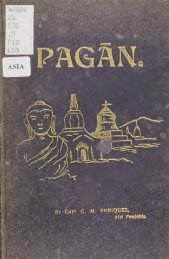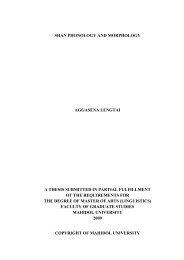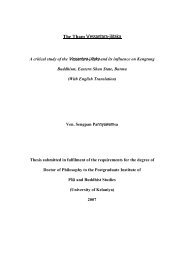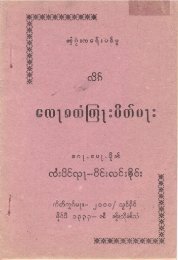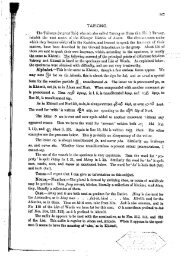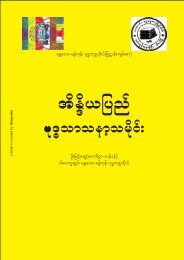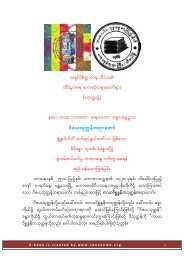The Tai Ahom National Council Memo Scheduling
The Tai Ahom National Council Memo Scheduling
The Tai Ahom National Council Memo Scheduling
Create successful ePaper yourself
Turn your PDF publications into a flip-book with our unique Google optimized e-Paper software.
<strong>The</strong> British followed a subtle policy of downgrading the <strong>Ahom</strong> politically, socially,<br />
economically, and even psychologically to affect the collapse of their moral. One classic<br />
example of the contemptuous treatment meted by Francis Jenkins, the Agent to the Governor-<br />
General in North East, to a genuine complaint lodged by ex-King Purandar Singha (1833-38)<br />
may be cited here. Just after one year he was dislodged from power and his territory of Upper<br />
Assam annexed to the British dominion, Purandar Singha protested against the desecration of the<br />
sacred royal moidams at Charaideo and the pulling down the bricks from the royal palace at<br />
Garhgaon by the Assam Tea Company. <strong>The</strong> representation (its English translation made by the<br />
British official authority) runs as below:<br />
“It was the custom of my ancestors from the time of Chukapha Rajah not to burn their<br />
dead but to bury them, and when any royal person died all the ornaments and golden<br />
plates to the value of from 20,000 to 25,000 Rupees were buried with him, and the body<br />
was buried at Cherry Deo and mound raised over it. It was called a moidam. I have now<br />
heard that some gentlemen are preparing to cultivate the tea there. Sir, these tombs are in<br />
a manner holy with us and the cultivating the tea or anything on them would much affect<br />
me, and they are destroying the Rajah Palace at Ghergong and building factories there.<br />
Sir, whereas any one builds a grave it is not the custom of the country to destroy them but<br />
these gentlemen not having regarded this have caused me great distress, and I have<br />
addressed you trusting that they will be order to leave these to remain and to repair these<br />
they have destroyed.”<br />
<strong>The</strong> complaint was addressed to Captain T. Brodie, the then Deputy Commissioner of<br />
Sibsagar, who forwarded it to Francis Jenkins. <strong>The</strong> contemptuous comments of the latter are<br />
unbecoming on the part of the highest officer of the East India Company’s government in the<br />
North-East. Jenkins’ official letter runs:<br />
“I mention that in my opinion the Rajah’s objection to the pulling down the Palace<br />
and Fort were of little weight. <strong>The</strong> Palace and Fort are of little to the govt. But they<br />
may prove a great convenience to the Assam Company, and is my opinion the whole<br />
had better be cleared away as the Fort is now only a harbour for wild beasts,…”<br />
(Letter No. 67, from the Agent to the Governor-General to the Secretary, Government of<br />
India at Fort William, 6 th April 1840, in Vol. No. 9).<br />
Marginalization and Pauperization of the <strong>Ahom</strong>:




